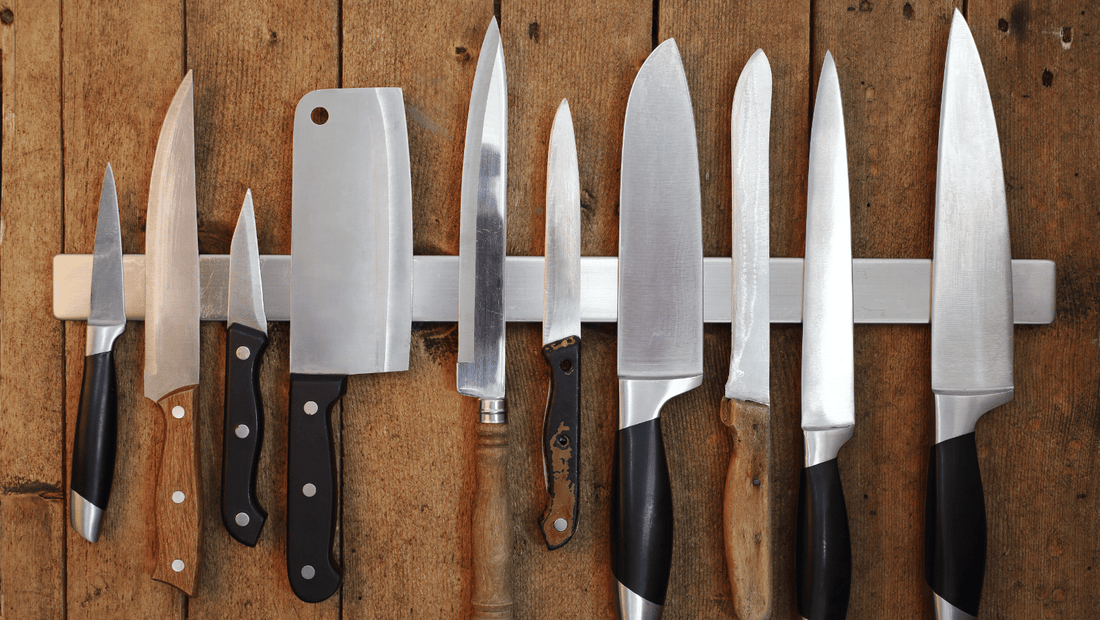
Knife Mastery: Your Guide to Slicing, Dicing, and Chopping like a Pro in the Kitchen!
Ah, the kitchen—the heart of every home, where tantalizing aromas and culinary delights come to life. But wait, what's the key to turning those fresh ingredients into a masterpiece? You guessed it: knives! These trusty companions are like the artists' brushes, helping you craft your culinary magnum opus. In this friendly guide, we'll whisk you through the exciting world of knives, from choosing the right blade to waltzing through various cutting techniques.
Picking Your Partner: Choosing the Right Knife
Knives come in a smorgasbord of shapes and sizes, each designed for specific tasks. Let's introduce you to some of the stars of the show:
1. Chef's Knife: The All-Rounder
- Purpose: Perfect for slicing, dicing, chopping, and mincing fruits, vegetables, meats, and herbs.
- Description: Broad and sharp, with a slightly curved blade that allows for a smooth rocking motion.
2. Paring Knife: The Precision Artist
- Purpose: Ideal for peeling, trimming, and creating intricate designs.
- Description: Short, narrow, and with a pointed tip for precision cuts.
3. Serrated Bread Knife: The Crust Conqueror
- Purpose: Effortlessly slices through crusty bread, bagels, and delicate fruits like tomatoes.
- Description: Long blade with serrated edges to grab and slice through tough surfaces.
4. Utility Knife: The Versatile Assistant
- Purpose: Handles various small to medium-sized tasks, from slicing sandwiches to trimming meat.
- Description: Mid-sized, between a chef's knife and paring knife, with a straight or slightly curved blade.
5. Filleting Knife: The Fish Whisperer
- Purpose: Designed for filleting and deboning fish.
- Description: Long, flexible blade to glide along the fish's bones and curves.
Sharpen Your Skills: How to Use Your Knives
Now that you've met your knife pals, let's sharpen your skills on how to wield them effectively:
1. Hold Your Knife Right
Grip the knife handle firmly with your dominant hand, placing your thumb and index finger on either side of the blade's base. Curl the other fingers around the handle for stability.
2. The Rock and Chop
For a chef's knife, use a "rocking" motion by pivoting the knife on the cutting board, keeping the tip on the board as you chop.
3. The Slice and Dice
For precise cuts, use a paring knife, holding the ingredient with your non-dominant hand and slicing with controlled, steady movements.
4. Mind Your Fingers
Always curl your fingertips inward when holding the ingredient to avoid accidental cuts.
5. Keeping it Sharp
Regularly sharpen your knives using a honing steel or a knife sharpener to maintain their sharpness and efficiency.
A Slice of Success: Knife Safety Tips
- Safety first, aspiring culinary maestros! Here are some friendly safety tips to keep you in one piece:
- A Sharp Knife is a Safe Knife: Dull knives can slip, leading to accidents. Keep those blades sharp!
- Cut on Stable Surfaces: Use a steady cutting board or surface to prevent the knife from slipping.
- Mind the Cleaning: Always wash and dry your knives by hand, never in the dishwasher.
- Store Safely: Use knife guards or a knife block to store your knives safely, preventing accidental cuts.
So there you have it, your friendly guide to using knives in the kitchen. Embrace your inner chef, wield those knives with confidence, and let the culinary magic unfold! Happy chopping! 🍴✨



